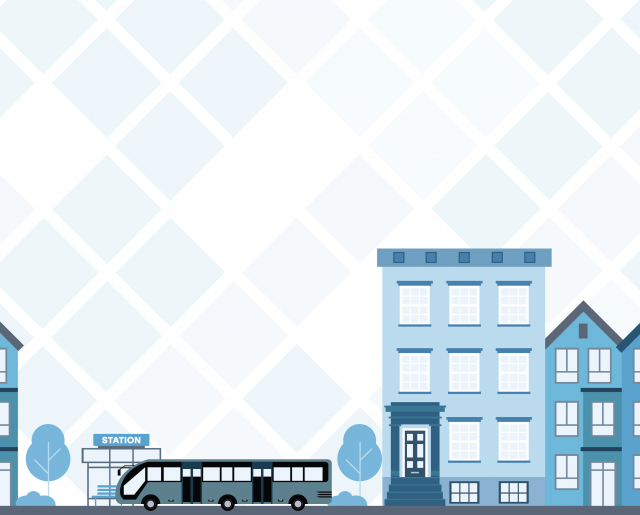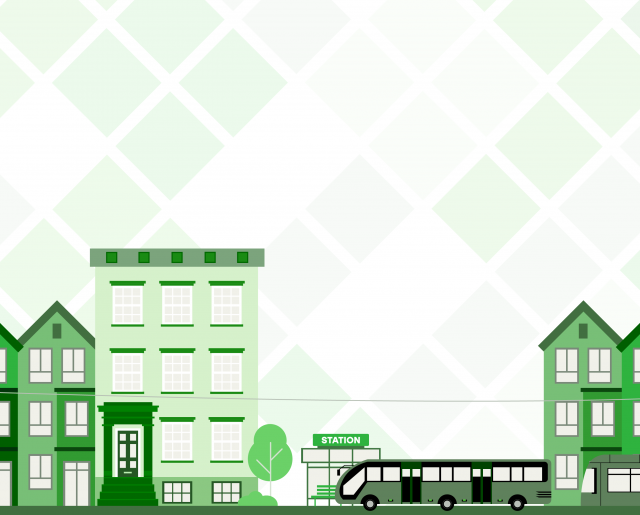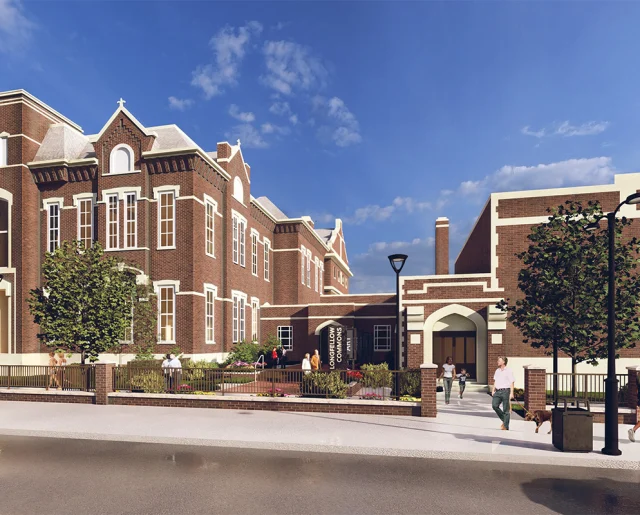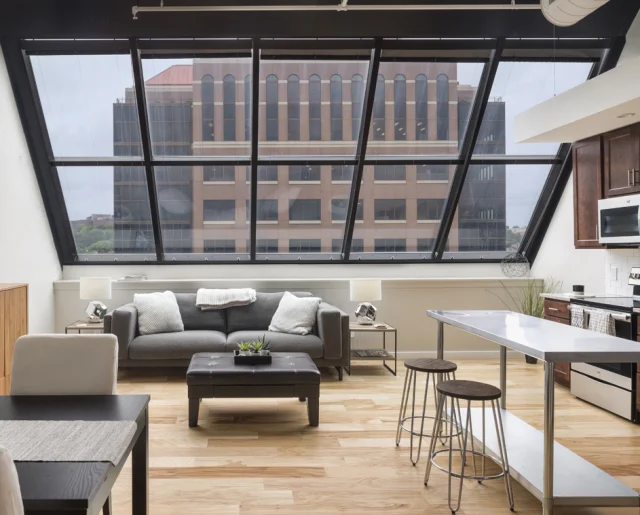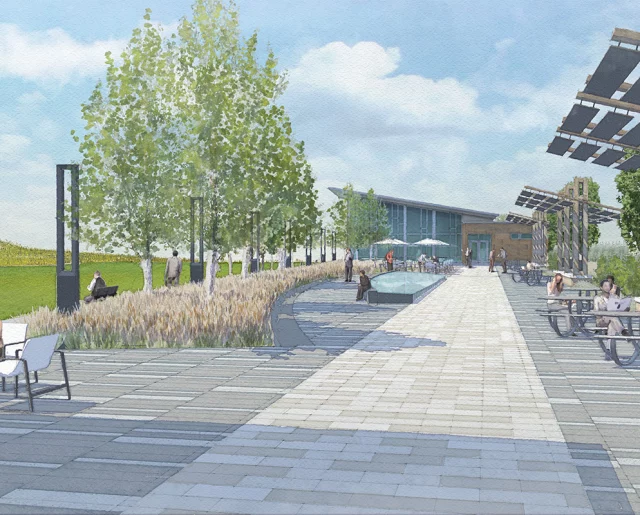The Impact of Columbus’ New Zoning Code on Affordable Housing

Like many cities across the United States, Columbus, Ohio faces a significant shortage of affordable housing. In response, the city has proposed new zoning codes aimed at addressing this issue and promoting equitable development. The proposed changes could reshape the urban landscape and increase the availability of affordable housing.
If approved, more than 40 zoning districts will be replaced with six mix-use district types: Regional Activity Center, Community Activity Center, Urban General 1, Urban General 2, Urban Center and Urban Core. Each district will have specific height and development requirements designed to foster diverse and inclusive communities. The new zoning code would affect about 4% of the city, or around 12,000 parcels along main roads. These areas were chosen because of their access to public transit and proximity to job centers, which will benefit all residents, but particularly the portion of the population in need for affordable housing.
How will these revisions to the Columbus Zoning Code impact affordable housing?
- Increased Flexibility for Developers – One key aspect of the new zoning regulations is the inclusion of more flexible zoning codes. This flexibility allows developers to explore various building options, particularly mixed-use developments that combine commercial and residential spaces, which can help increase the availability of affordable housing.
- Mandatory Affordable Housing Units – The proposed regulations require developers to include a certain percentage of affordable housing units in their projects. This helps ensure that new developments contribute to the city’s affordable housing stock, helping to prevent gentrification and promotes mixed-income neighborhoods.
- Improved Access to Public Transportation and Amenities – The new zoning regulations emphasize improving access to public transportation and amenities in low-income neighborhoods. This can help reduce transportation costs for residents and create more opportunities for affordable housing near essential services.
Diving deeper into these three topics we can see how the new zoning regulations should help spur the type of development needed to combat the low amount of affordable housing in Columbus today.
1. Increased Flexibility for Developers
The new zoning maps in Columbus aim to positively impact affordable housing by designating specific areas for development, relaxing density and height restrictions, incorporating inclusionary zoning requirements, and promoting transit-oriented development. These measures are designed to increase the supply of affordable housing and foster equitable, sustainable communities.
Zoning Designations: The new maps designate specific areas for affordable housing, including zones that allow higher density or mixed-use development, which are conducive to constructing affordable units. This targeted approach concentrates efforts and resources on creating more affordable housing options.
Density and Height Restrictions: The new zoning maps may relax density and height restrictions in certain zones to encourage affordable housing construction. Higher density and taller buildings can increase the number of units on a given piece of land, making it more financially viable to include affordable housing options.
2. Mandatory Affordable Housing Units
The new regulations require developers to include a percentage of affordable housing units in new projects through inclusionary zoning. This ensures a steady supply of affordable housing and promotes mixed-income neighborhoods. To support this initiative, Columbus is exploring funding mechanisms such as public-private partnerships, federal programs, and grants.
Inclusionary zoning: By requiring developers to set aside a certain percentage of units in new projects, it helps integrate affordable housing into various neighborhoods, preventing the concentration of poverty and promoting socio-economic diversity. By mandating affordable units in new developments, the city aims to ensure that affordable housing is available across different areas.
Addressing gentrification: Additionally, the zoning regulations address gentrification and displacement by protecting existing affordable housing and encouraging the creation of accessory dwelling units (ADUs). These small, separate units within existing properties can be rented to low-income families, helping them stay in their neighborhoods despite rising housing costs. This approach not only increases affordable housing options but also helps maintain community stability.
3. Improved Access to Public Transportation and Amenities
The new zoning maps prioritize transit-oriented development (TOD) in certain areas, focusing on building housing, commercial spaces, and amenities near public transportation. This approach facilitates the creation of affordable housing near transit hubs, making it easier for residents to access transportation and reduce their commuting costs. By encouraging TOD, the city aims to create more connected and accessible neighborhoods.
Increased Housing Options: Mixed-use development along main vehicular arteries can lead to the construction of residential units in areas that were previously predominantly commercial. This increase in housing options makes it more convenient for residents to access amenities and transportation.
Affordable Housing Integration: Integrating affordable housing units within mixed-use developments promotes diverse and inclusive communities. Residents of different income levels can live and work in the same vicinity, enhancing the neighborhood’s social fabric.
Access to Amenities and Services: By allowing mixed uses along main vehicular arteries, residents of affordable housing units in these areas can benefit from easy access to public transportation, reducing their reliance on private vehicles and potentially lowering transportation. And that’s not all, easier access to public transportation also means access to amenities such as grocery stores, restaurants, shops, and other services. This can contribute to the overall livability and convenience of the neighborhoods, improving the quality of life for residents.
Revitalization and Economic Development: Allowing mixed uses along main vehicular arteries can contribute to the revitalization of underutilized or neglected areas. The development of mixed-use buildings can attract businesses and increase economic activity, leading to job creation and potential improvements in the local economy.
While the impact of these zoning regulations on affordable housing will take time to fully realize, they represent a proactive step by the city of Columbus to address housing affordability, gentrification,and displacement. By encouraging mixed-income neighborhoods, mandating affordable housing units, and implementing measures to protect existing affordable housing, these regulations aim to create a more inclusive and equitable housing landscape in the city. Zoning maps determine the allowable land uses and development regulations for different areas, and they play a crucial role in shaping the housing landscape.
To learn more about the proposed new zoning code, visit the City of Columbus’ website by clicking here. You can review the full 2024 Zoning Code Draft and get to know the various districts to be created.

